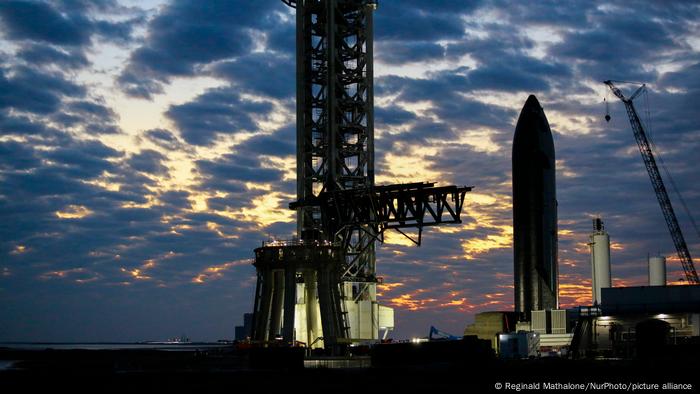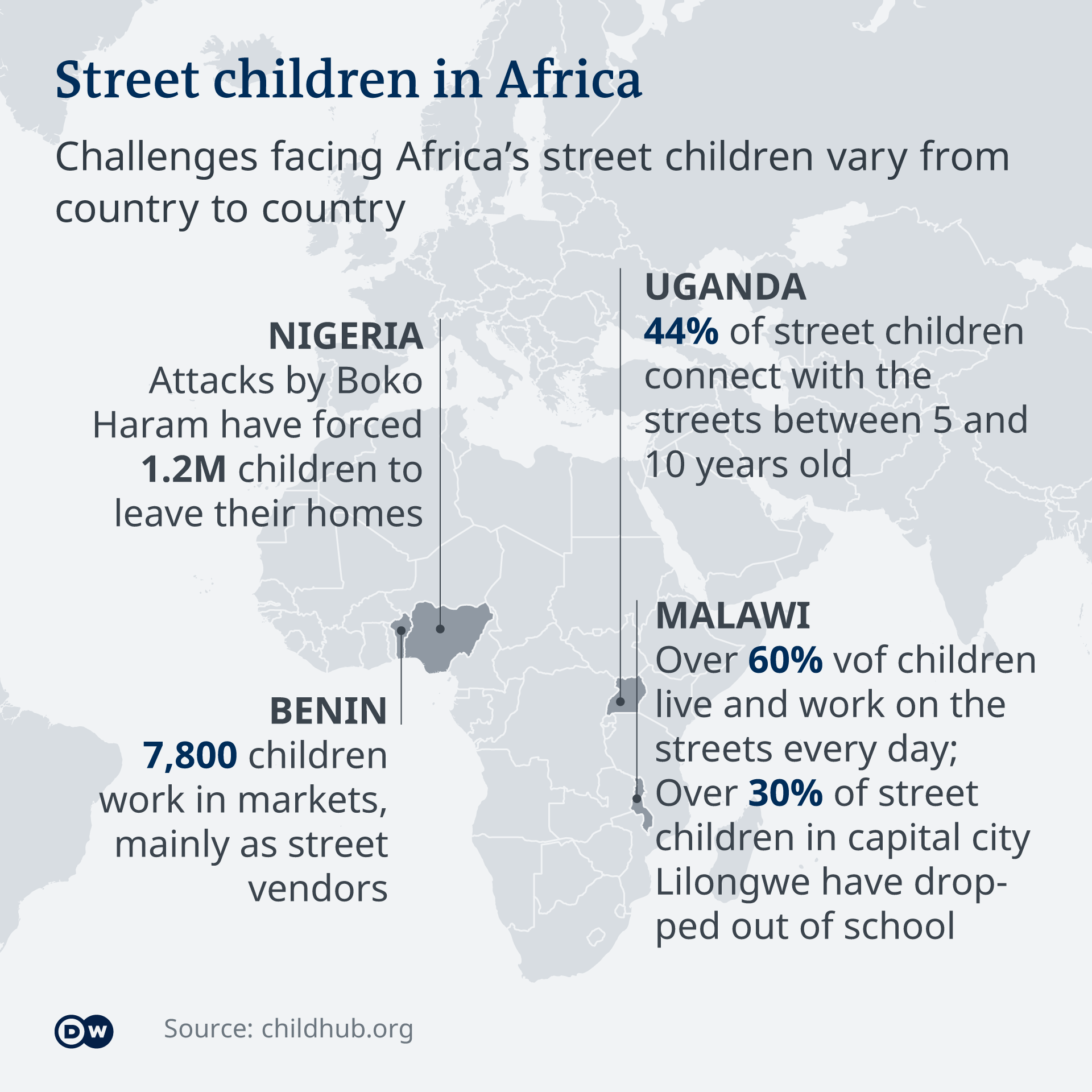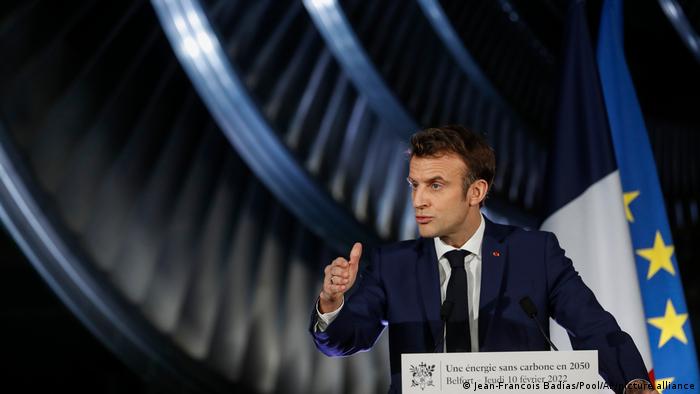CANADA
Trucker protest 'worse than Covid' for small businesses



Trucks lined up at the Blue Water Bridge that connects Port Huron, Michigan and Sarnia, Canada in Port Huron, Michigan on February 10, 2022
White House presses Canada to intervene against border blockade as copycat protests spread

Trucks lined up at the Blue Water Bridge that connects Port Huron, Michigan and Sarnia, Canada in Port Huron, Michigan on February 10, 2022
(AFP/JEFF KOWALSKY)
Michel COMTE
Thu, February 10, 2022, 6:37 PM·3 min read
The trucker protest over Covid restrictions has been worse than the pandemic itself for small businesses in Canada's capital, as they were preparing for an easing of health rules when the convoy rolled in, shopkeepers say.
Ontario province, which includes Ottawa, had lifted a lockdown of restaurants and bars and increased capacity limits on retailers when up to 15,000 protesters and hundreds of trucks converged on the downtown area at the end of January.
Local small businesses were really excited for crowds to flood back to Byward Market -- Ottawa's main shopping and cultural district -- and make it lively again, said Inaas Kiryakos, owner of clothing and jewelry store Milk.
But with downtown streets blocked by the big rigs and police checkpoints, and officials warning people not to venture into the area, foot traffic dried up.
Most stores closed temporarily. Others reduced their operating hours. A dozen surveyed by AFP estimated their losses in the thousands of dollars per day while business associations warned the total could top tens of millions.
"This convoy is worse than Covid," Kiryakos said.
She explained that her shop relies on people coming to the neighborhood to dine in its many restaurants and stopping in to make a purchase, as well as spillover shoppers from the nearby Rideau Centre, a big mall.
"We were looking forward to a spike in foot traffic after the restrictions were lifted, which is what happened after past lockdowns ended," she said.
"When the truckers rolled up, it extended the lockdown in a much worse way, because anybody that would normally come down wouldn't want to," she explained.
The store had no customers Thursday.
- Mall closed -
Two blocks away, Ottawa's largest mall has been closed for two weeks after being overwhelmed by angry protesters who harassed staff and refused to follow masking rules when they first arrived in Ottawa.
Thousands of people work at 175 businesses at Rideau Centre.
Its owner, Cadillac Fairview, said in a statement that it opted to close the mall "as a result of ongoing public safety issues related to demonstrations," calling the situation "untenable."
"The continued closure of an important community space, the loss of employment income, and the financial impact on our clients is heart-breaking given all of our shared pain and sacrifice during the pandemic," said the company.
Tom Charleboix at the Paper Papier fine pens and stationery store around the corner from the American embassy, where surrounding streets have been cordoned off by police, echoed the pains of other shopkeepers.
"We've been open the whole time, but nobody has come into the store," he said.
Government workers from nearby offices who might come in during a lunch break or after work haven't during the pandemic because most worked from home over the past two years.
And now they're avoiding the downtown because of the protest. "Officials have told them not to come downtown and so they're not," Charleboix said.
"I thought it was a bit ironic that the first day (all businesses) were allowed to open, they couldn't," he commented.
The cancellation due to Covid of Ottawa's annual Winterlude, which had been scheduled to start February 4, has also meant no tourists coming to town.
- 'Hardly any customers' -
At one of several cannabis stores in the neighborhood, it was much the same.
"We've had hardly any customers in the past weeks. We usually see a lot of foot traffic and it's been dead," said Liv at Dutch Love. AFP is withholding her last name at her request over fears of a backlash.
The store, she said, has closed early most days after staff faced abusive comments from protesters who refused to wear face masks.
In front of Parliament, a lone counter-protester stood up for shopkeepers, recounting the hardships and financial toll the protests are having on them.
"I'm here to advocate for my community and very respectfully ask the convoy to go," Bobby Ramsay told AFP.
amc/dw
Michel COMTE
Thu, February 10, 2022, 6:37 PM·3 min read
The trucker protest over Covid restrictions has been worse than the pandemic itself for small businesses in Canada's capital, as they were preparing for an easing of health rules when the convoy rolled in, shopkeepers say.
Ontario province, which includes Ottawa, had lifted a lockdown of restaurants and bars and increased capacity limits on retailers when up to 15,000 protesters and hundreds of trucks converged on the downtown area at the end of January.
Local small businesses were really excited for crowds to flood back to Byward Market -- Ottawa's main shopping and cultural district -- and make it lively again, said Inaas Kiryakos, owner of clothing and jewelry store Milk.
But with downtown streets blocked by the big rigs and police checkpoints, and officials warning people not to venture into the area, foot traffic dried up.
Most stores closed temporarily. Others reduced their operating hours. A dozen surveyed by AFP estimated their losses in the thousands of dollars per day while business associations warned the total could top tens of millions.
"This convoy is worse than Covid," Kiryakos said.
She explained that her shop relies on people coming to the neighborhood to dine in its many restaurants and stopping in to make a purchase, as well as spillover shoppers from the nearby Rideau Centre, a big mall.
"We were looking forward to a spike in foot traffic after the restrictions were lifted, which is what happened after past lockdowns ended," she said.
"When the truckers rolled up, it extended the lockdown in a much worse way, because anybody that would normally come down wouldn't want to," she explained.
The store had no customers Thursday.
- Mall closed -
Two blocks away, Ottawa's largest mall has been closed for two weeks after being overwhelmed by angry protesters who harassed staff and refused to follow masking rules when they first arrived in Ottawa.
Thousands of people work at 175 businesses at Rideau Centre.
Its owner, Cadillac Fairview, said in a statement that it opted to close the mall "as a result of ongoing public safety issues related to demonstrations," calling the situation "untenable."
"The continued closure of an important community space, the loss of employment income, and the financial impact on our clients is heart-breaking given all of our shared pain and sacrifice during the pandemic," said the company.
Tom Charleboix at the Paper Papier fine pens and stationery store around the corner from the American embassy, where surrounding streets have been cordoned off by police, echoed the pains of other shopkeepers.
"We've been open the whole time, but nobody has come into the store," he said.
Government workers from nearby offices who might come in during a lunch break or after work haven't during the pandemic because most worked from home over the past two years.
And now they're avoiding the downtown because of the protest. "Officials have told them not to come downtown and so they're not," Charleboix said.
"I thought it was a bit ironic that the first day (all businesses) were allowed to open, they couldn't," he commented.
The cancellation due to Covid of Ottawa's annual Winterlude, which had been scheduled to start February 4, has also meant no tourists coming to town.
- 'Hardly any customers' -
At one of several cannabis stores in the neighborhood, it was much the same.
"We've had hardly any customers in the past weeks. We usually see a lot of foot traffic and it's been dead," said Liv at Dutch Love. AFP is withholding her last name at her request over fears of a backlash.
The store, she said, has closed early most days after staff faced abusive comments from protesters who refused to wear face masks.
In front of Parliament, a lone counter-protester stood up for shopkeepers, recounting the hardships and financial toll the protests are having on them.
"I'm here to advocate for my community and very respectfully ask the convoy to go," Bobby Ramsay told AFP.
amc/dw
GM cancels shifts at Michigan plant, enlists cargo planes over border protest

General Motors canceled two shifts at one of its plants in Michigan on Thursday because of parts shortages caused by the ongoing COVID-19 protests blocking a key U.S.-Canada border crossing.

General Motors canceled two shifts at one of its plants in Michigan on Thursday because of parts shortages caused by the ongoing COVID-19 protests blocking a key U.S.-Canada border crossing.
File Photo by Jeff Kowalsky/EPA-EFE
Feb. 10 (UPI) -- General Motors said Thursday, parts shortages caused by the ongoing protests blocking a U.S.-Canada border crossing are forcing it to cancel two shifts at its production facility in Lansing Delta Township, Mich.
The company made the announcement a day after Toyota and Ford made similar decisions.
Protesters continue to block traffic at the Ambassador Bridge between Ontario and Port Huron, Mich. The move has put even more pressure on an already-disrupted supply chain.
The Ambassador Bridge is the busiest international crossing in North America by volume, and the protests have also caused massive delays at neighboring border crossings like the Detroit-Windsor Tunnel and Blue Water Bridge.
GM has resorted to chartering cargo planes to keep its factories running. Two planes will fly parts stuck at Canada's border into the United States in order to keep a truck plant operating.
Factories in Ontario have also had to cancel shifts because of shortages caused by the protesters.
Under normal circumstances, approximately $356 million worth of goods cross the bridge each day, according to Politico.
Protesters are calling for an end to COVID-19 restrictions, after initially organizing to call for an end to vaccination mandates.
Feb. 10 (UPI) -- General Motors said Thursday, parts shortages caused by the ongoing protests blocking a U.S.-Canada border crossing are forcing it to cancel two shifts at its production facility in Lansing Delta Township, Mich.
The company made the announcement a day after Toyota and Ford made similar decisions.
Protesters continue to block traffic at the Ambassador Bridge between Ontario and Port Huron, Mich. The move has put even more pressure on an already-disrupted supply chain.
The Ambassador Bridge is the busiest international crossing in North America by volume, and the protests have also caused massive delays at neighboring border crossings like the Detroit-Windsor Tunnel and Blue Water Bridge.
GM has resorted to chartering cargo planes to keep its factories running. Two planes will fly parts stuck at Canada's border into the United States in order to keep a truck plant operating.
Factories in Ontario have also had to cancel shifts because of shortages caused by the protesters.
Under normal circumstances, approximately $356 million worth of goods cross the bridge each day, according to Politico.
Protesters are calling for an end to COVID-19 restrictions, after initially organizing to call for an end to vaccination mandates.
Issued on: 11/02/2022 - 03:31
An entrance ramp to the Ambassador Bridge is seen closed in Detroit, Michigan, U.S., due to truckers' protests against Covid-19 vaccine mandates in Canada, February 10, 2022. © Rebecca Cook, Reuters
Text by: NEWS WIRES|
Video by: Yinka OYETADE
The Biden administration urged Prime Minister Justin Trudeau’s government Thursday to use its federal powers to end the truck blockade by Canadians protesting the country’s COVID-19 restrictions, as the bumper-to-bumper demonstration forced auto plants on both sides of the border to shut down or scale back production.
For the fourth straight day, scores of truckers taking part in what they dubbed the Freedom Convoy blocked the Ambassador Bridge connecting Windsor, Ontario, to Detroit, disrupting the flow of auto parts and other products between the two countries.
The White House said Homeland Security Secretary Alejandro Mayorkas and Transportation Secretary Pete Buttigieg spoke with their Canadian counterparts and urged them to help resolve the standoff.
Conservative Ontario Premier Doug Ford, meanwhile, moved to cut off funding for the protests by successfully asking a court to freeze millions of dollars in donations to the convoy through crowd-funding site GiveSendGo. Ford has called the protests an occupation.
Canadian officials previously got GoFundMe to cut off funding after protest organizers used the site to raise about 10 million Canadian dollars ($7.8 million.) GoFundMe determined that the fundraising effort violated the site’s terms of service due to unlawful activity.
With political and economic pressure mounting, Windsor Mayor Drew Dilkens announced the city will seek a court injunction to end the occupation.
“The economic harm is not sustainable and it must come to an end,” he said.
In the U.S., authorities braced for the possibility of similar truck-borne protests inspired by the Canadians, and authorities in Paris and Belgium banned road blockades to head off disruptions there, too.
>> Inspired by Ottawa protests, French motorists join ‘Freedom Convoy’ bound for Paris
The U.S. Department of Homeland Security said in a bulletin to local and state law enforcement agencies that it has received reports that truckers are planning to “potentially block roads in major metropolitan cities” in a protest against vaccine mandates and other issues.
The agency said the convoy could begin in Southern California as early as this weekend, possibly disrupting traffic around the Super Bowl, and reach Washington in March in time for the State of the Union address, according to a copy of Tuesday’s bulletin obtained by The Associated Press.
The White House said the department is “surging additional staff” to the Super Bowl just in case.
The ban on road blockades in Europe and the threat of prison and heavy fines were likewise prompted by online chatter from groups calling on drivers to converge on Paris and Brussels over the next few days.
The Ambassador Bridge is the busiest U.S.-Canadian border crossing, carrying 25% of all trade between the two countries, and the effects of the blockade there were felt rapidly.
Ford said its Windsor engine plant reopened Thursday after being shut down on Wednesday because of a lack of parts. But the factory and the company’s assembly plant in Oakville, Ontario, near Toronto, were operating at reduced capacity, the automaker said.
On the U.S. side, General Motors canceled the second shift on Wednesday and the first and second on Thursday at its SUV factory outside Lansing, Michigan.
Toyota said three of its plants in Ontario closed for the rest of the week because of parts shortages, and production also had to be curtailed in Georgetown, Kentucky.
Workers on the morning shift at a Windsor minivan plant operated by Stellantis, formerly Fiat Chrysler, were sent home early.
Michigan Gov. Gretchen Whitmer urged Canadian authorities to quickly resolve the standoff, saying: “It’s hitting paychecks and production lines. That is unacceptable.”
The Teamsters denounced the blockade, saying in a statement from General President Jim Hoffa that it threatened “the livelihood of working Americans and Canadians in the automotive, agricultural and manufacturing sectors.”
Hundreds of demonstrators in trucks have also paralyzed the streets of downtown Ottawa for almost two weeks now, and have now closed three border crossings: at Windsor; at Coutts, Alberta, opposite Montana; and at Emerson, Manitoba, across from North Dakota.
The protesters are decrying vaccine mandates for truckers and other COVID-19 restrictions and are railing against Trudeau, even though many of Canada’s precautions, such as mask rules and vaccine passports for getting into restaurants, theaters and other places, were enacted by provincial authorities, not the federal government, and are already rapidly being lifted as the omicron surge levels off.
Trudeau continued to stand firm against lifting vaccine mandates, including a requirement that all truck drivers entering the country be fully vaccinated. But because an estimated 90% of the nation’s truckers are already inoculated, some conservatives have called on the prime minister to drop the mandate.
The convoy has been promoted and cheered on by many Fox News personalities and attracted support from the likes of former President Donald Trump and Texas Sen. Ted Cruz.
The Associated Press identified more than a dozen Facebook groups encompassing roughly a half-million members that are being used to drum up support for the Canadian protests or plan similar ones in the U.S. and Europe.
To get around the blockade and into Canada, truckers in the Detroit area have had to drive 70 miles north to Port Huron, Michigan, and cross the Blue Water Bridge, where there was a two-hour delay leaving the U.S.
The blockade is happening at a bad time for the U.S. auto industry. Supplies of new vehicles already are low across the nation because of the global shortage of computer chips, which has forced automakers to temporarily close factories.
“This is the last thing any automaker needs, any manufacturer needs, because parts are so scarce,” industry analyst David Whiston said.
(AP)
Text by: NEWS WIRES|
Video by: Yinka OYETADE
The Biden administration urged Prime Minister Justin Trudeau’s government Thursday to use its federal powers to end the truck blockade by Canadians protesting the country’s COVID-19 restrictions, as the bumper-to-bumper demonstration forced auto plants on both sides of the border to shut down or scale back production.
For the fourth straight day, scores of truckers taking part in what they dubbed the Freedom Convoy blocked the Ambassador Bridge connecting Windsor, Ontario, to Detroit, disrupting the flow of auto parts and other products between the two countries.
The White House said Homeland Security Secretary Alejandro Mayorkas and Transportation Secretary Pete Buttigieg spoke with their Canadian counterparts and urged them to help resolve the standoff.
Conservative Ontario Premier Doug Ford, meanwhile, moved to cut off funding for the protests by successfully asking a court to freeze millions of dollars in donations to the convoy through crowd-funding site GiveSendGo. Ford has called the protests an occupation.
Canadian officials previously got GoFundMe to cut off funding after protest organizers used the site to raise about 10 million Canadian dollars ($7.8 million.) GoFundMe determined that the fundraising effort violated the site’s terms of service due to unlawful activity.
With political and economic pressure mounting, Windsor Mayor Drew Dilkens announced the city will seek a court injunction to end the occupation.
“The economic harm is not sustainable and it must come to an end,” he said.
In the U.S., authorities braced for the possibility of similar truck-borne protests inspired by the Canadians, and authorities in Paris and Belgium banned road blockades to head off disruptions there, too.
>> Inspired by Ottawa protests, French motorists join ‘Freedom Convoy’ bound for Paris
The U.S. Department of Homeland Security said in a bulletin to local and state law enforcement agencies that it has received reports that truckers are planning to “potentially block roads in major metropolitan cities” in a protest against vaccine mandates and other issues.
The agency said the convoy could begin in Southern California as early as this weekend, possibly disrupting traffic around the Super Bowl, and reach Washington in March in time for the State of the Union address, according to a copy of Tuesday’s bulletin obtained by The Associated Press.
The White House said the department is “surging additional staff” to the Super Bowl just in case.
The ban on road blockades in Europe and the threat of prison and heavy fines were likewise prompted by online chatter from groups calling on drivers to converge on Paris and Brussels over the next few days.
The Ambassador Bridge is the busiest U.S.-Canadian border crossing, carrying 25% of all trade between the two countries, and the effects of the blockade there were felt rapidly.
Ford said its Windsor engine plant reopened Thursday after being shut down on Wednesday because of a lack of parts. But the factory and the company’s assembly plant in Oakville, Ontario, near Toronto, were operating at reduced capacity, the automaker said.
On the U.S. side, General Motors canceled the second shift on Wednesday and the first and second on Thursday at its SUV factory outside Lansing, Michigan.
Toyota said three of its plants in Ontario closed for the rest of the week because of parts shortages, and production also had to be curtailed in Georgetown, Kentucky.
Workers on the morning shift at a Windsor minivan plant operated by Stellantis, formerly Fiat Chrysler, were sent home early.
Michigan Gov. Gretchen Whitmer urged Canadian authorities to quickly resolve the standoff, saying: “It’s hitting paychecks and production lines. That is unacceptable.”
The Teamsters denounced the blockade, saying in a statement from General President Jim Hoffa that it threatened “the livelihood of working Americans and Canadians in the automotive, agricultural and manufacturing sectors.”
Hundreds of demonstrators in trucks have also paralyzed the streets of downtown Ottawa for almost two weeks now, and have now closed three border crossings: at Windsor; at Coutts, Alberta, opposite Montana; and at Emerson, Manitoba, across from North Dakota.
The protesters are decrying vaccine mandates for truckers and other COVID-19 restrictions and are railing against Trudeau, even though many of Canada’s precautions, such as mask rules and vaccine passports for getting into restaurants, theaters and other places, were enacted by provincial authorities, not the federal government, and are already rapidly being lifted as the omicron surge levels off.
Trudeau continued to stand firm against lifting vaccine mandates, including a requirement that all truck drivers entering the country be fully vaccinated. But because an estimated 90% of the nation’s truckers are already inoculated, some conservatives have called on the prime minister to drop the mandate.
The convoy has been promoted and cheered on by many Fox News personalities and attracted support from the likes of former President Donald Trump and Texas Sen. Ted Cruz.
The Associated Press identified more than a dozen Facebook groups encompassing roughly a half-million members that are being used to drum up support for the Canadian protests or plan similar ones in the U.S. and Europe.
To get around the blockade and into Canada, truckers in the Detroit area have had to drive 70 miles north to Port Huron, Michigan, and cross the Blue Water Bridge, where there was a two-hour delay leaving the U.S.
The blockade is happening at a bad time for the U.S. auto industry. Supplies of new vehicles already are low across the nation because of the global shortage of computer chips, which has forced automakers to temporarily close factories.
“This is the last thing any automaker needs, any manufacturer needs, because parts are so scarce,” industry analyst David Whiston said.
(AP)













